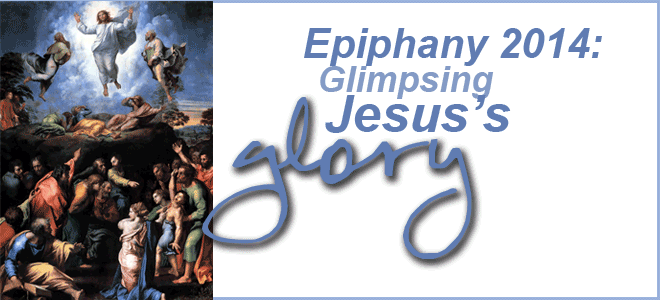 The Day of Epiphany focuses on the coming of the magi to see the Boy Jesus and on their presenting their gifts to Him (Matthew 2:1-12), but the Season of Epiphany only begins with that Day and features other revelations of the glory of God in the flesh of the Man Jesus. For example, the Season ends with Jesus’s Transfiguration, the greatest revelation of God’s glory in the Man Jesus Christ. Each and every day of the Season, with glimpses of Jesus’s glory, has application for us and for our salvation.
The Day of Epiphany focuses on the coming of the magi to see the Boy Jesus and on their presenting their gifts to Him (Matthew 2:1-12), but the Season of Epiphany only begins with that Day and features other revelations of the glory of God in the flesh of the Man Jesus. For example, the Season ends with Jesus’s Transfiguration, the greatest revelation of God’s glory in the Man Jesus Christ. Each and every day of the Season, with glimpses of Jesus’s glory, has application for us and for our salvation.
Originally an “epiphany” was a king or an emperor’s showing himself publicly as in an official visit or appearance. But, the word came to be used more specifically of God’s revealing Himself in the flesh of the man Jesus, and especially to non-Jews. The Epiphany season itself begins and ends with white paraments on the chancel furnishings, appropriate for baptism and the light and purity of our Lord, but the paraments for the Sundays in between are green, the color of growth, leaves, foliage, fruit, and life, suggesting spiritual growth.
About the events of the Day of Epiphany (January 6, which in the future we might consider observing on the day), we must admit that we do not know everything (Matthew 2:1 12). For example, we do not know everything about the magi (sometimes called “wise men” or “kings”) who came to visit Jesus, least of all what their names were (though tradition offers some) or how many there were (we usually assume three because of the three gifts). However, we can safely say that the Word of God, the Old Testament Scriptures, led them to God in the flesh (probably not at the manger but in a Bethlehem house some time after Jesus was born). Likewise for us today, God’s Word leads us to God in the flesh, present with His body and blood under the forms of bread and wine in the Sacrament of the Altar.
The First Sunday after Epiphany (January 12th, this year) commemorates The Baptism of Our Lord (Matthew 3:13-17). That event is one of the clearest revelations of our Triune God as Father (the voice from heaven), Son (the man Jesus standing in the Jordan River), and Holy Spirit (the dove). And, in being baptized, Jesus sets apart as holy such a washing for our forgiveness of sins. We do not witness the epiphany of the Trinity as did those present there that day, but we have our own epiphanies, as it were, in our baptisms, which connect us to Jesus’s death and resurrection (Romans 6:1-14), and thereby give those who believe the forgiveness of sins and so also eternal life.
The following are the other Sundays in Epiphany 2014 and their Gospel Readings (appointed by Lutheran Service Book’s three-year lectionary series A, which largely uses the Holy Gospel according to St. Matthew).
- Second Sunday (1/19): Jesus is identified as the Lamb of God
(John 1:29-42a) - Third Sunday (1/26): Jesus preaches and calls fishermen as disciples
(Matthew 4:12-25) - Fifth Sunday (2/9): Jesus preaches about the greatest righteousness
(Matthew 5:13-20) - Sixth Sunday (2/16): Jesus preaches about people reconciling
(Matthew 5:21-37) - Seventh Sunday (2/23): Jesus preaches about love of our neighbors
(Matthew 5:38-48)
In the foregoing list, you may have noticed a jump in numbering of Sundays and a missing date. On February 2nd we observe the Purification of Mary and the Presentation of Our Lord. This ancient festival commemorating the events of its Gospel Reading (Luke 2:22-40) dates back to at least the fourth century and is best understood in its original sense as a festival of our Lord, despite some religious traditions’ focusing more on Mary.
No matter how many Sundays there are in Epiphany, in Lutheran practice dating back to the Reformation, the last Sunday is always the Sunday of the Transfiguration (March 2nd, this year; some other religious traditions observe it on August 6th). Across the Epiphany season, we realize that the Babe born in Bethlehem was and revealed Himself as God of God, Light of Light, Very God of Very God, especially in the greatest glimpse of His glory on the Mount of Transfiguration, highlighting His fulfillment of the Law and the Prophets (Matthew 17:1-9).
Read and hear the sermons at Pilgrim from the Season of Epiphany and from every season of the Church Year here.
We acknowledge and thank Shannon Page, a friend of our congregation, for creating the banner at the top of this page, which uses an image of Raphael’s last painting, The Transfiguration, found here.

